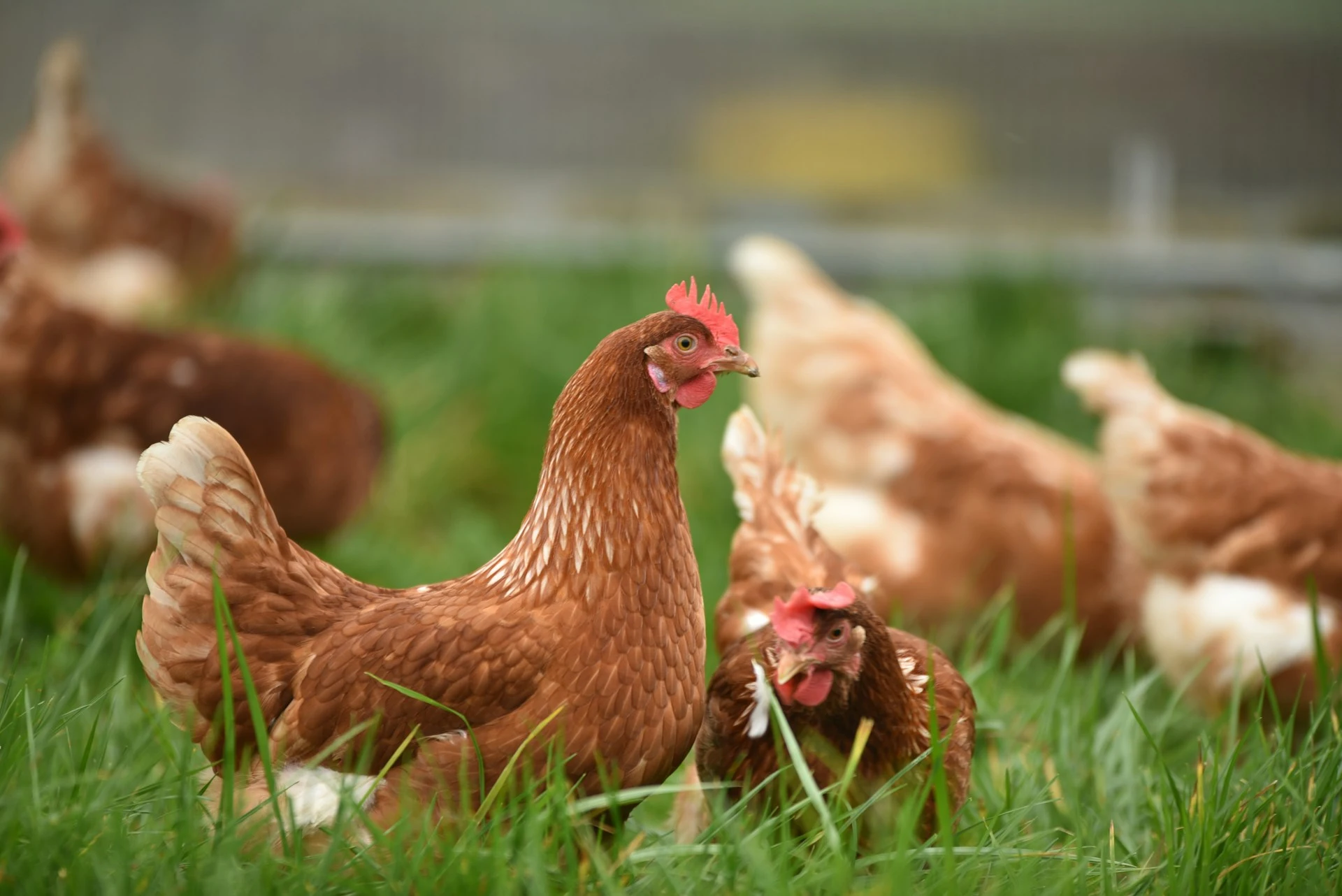When we find our birds with loose droppings the first disease that springs to mind is coccidiosis. But what exactly is coccidiosis and how does it affect our chickens? Coccidiosis is a parasite which damages the gut wall of chickens. There are a number of species of coccidiosis and their effects vary from harmless right through to life threatening. Let us explore coccidiosis in chickens.
Causes
Coccidiosis causes considerable economic loss in the poultry industry. Chickens are susceptible to at least 11 species of coccidia.
The most common species are Eimeria tenella, which causes the cecal or bloody type of coccidiosis,
E. necatrix, which causes bloody intestinal coccidiosis, and
E. acervulina and E. maxima, which cause chronic intestinal coccidiosis.
General Life Cycle of Coccidia
The life cycle of coccidiosis is important if we are to understand how to control this parasite. The life cycle starts with what is known as an unsporulated oocyst. Basically it is like an egg containing an early stage of the coccidiosis which is yet to develop. In this state the oocyst is unable to cause disease if eaten. The oocyst sprorulates (develops so that it becomes infective) in as little as 24 hours under optimum conditions (a humid environment at 25-30ºC).
The oocyst has a thick wall which protects it from heat, cold and even common disinfectants. This enables coccidiosis oocysts to survive for up to several years and makes it difficult to destroy them.
When the sporoulated oocyst is eaten by the chicken, chemicals in the gut break down the oocyst wall and release the infective form of the coccidiosis called the sporocyst.
These sporocysts change into sporozoites which invade the cells of the gut wall and replicate. When the sporozoites have replicated in the cell, the cell bursts releasing another stage of coccidiosis called merizoites. These merizoites go on to invade and destroy more of the cells in the gut wall.
Eventually the coccidiosis infection results in the production of more oocysts which are passed out with the faeces into the environment and can go on to infect other chickens.
Coccidiosis in chickens: How they get infected
One of the problems with coccidiosis is that a single oocyst throughout its lifecycle can end up destroying several thousand cells in the gut. If a chicken eats a few oocysts and only a few thousand cells in the gut are destroyed then the chicken will not have any ill effects and will go on to become immune to coccidiosis.
However if the bird eats large numbers of oocysts then millions of cells in the gut are destroyed. This is incredibly painful for the birds and causes them to stop eating and to adopt a hunched posture with ruffled feathers. The damage to the gut wall reduces the ability of the gut to absorb nutrients resulting in weight loss and diarrhoea.
In severe coccidiosis especially where E. tenella is involved the damage to the gut wall can be so severe that the bird bleeds into its gut causing blood in the bird’s droppings and anaemia characterised by a pale comb and wattles.
This gut damage can also disrupt the natural balance of bacteria in the gut thereby allowing harmful bacteria to take over and cross the damaged gut wall causing blood poisoning.
The aim of poultry keepers and vets is to ensure that chickens are exposed to low levels of coccidiosis so that they build up immunity but not so many oocysts that they suffer the ill effects described above.
What often can happen is that the first few chickens in the flock are exposed to a few oocysts and build up immunity however these birds act as coccidiosis factories and produce millions of oocysts which can go on to infect their flock mates. If the pen is not cleaned properly after the flock leaves the pen then the next flock are exposed to high levels of coccidiosis and suffer the adverse effects.
Normally, most birds pass small numbers of oocysts in their droppings without apparent ill effects. Coccidiosis becomes important as a disease when animals live, or are reared, under conditions that permit the build-up of infective oocysts in the environment.
The intensive rearing of domestic chickens may provide these conditions.
Young chickens pick up the infection from contaminated premises (soil, houses, utensils, etc.). These premises may have been contaminated previously by other young infected birds or by adult birds that have recovered from the condition. Wet areas around water fountains are a source of infection.
Oocysts remain viable in litter for many months. In this way, they can contaminate a farm from year to year. Oocysts are killed by freezing, extreme dryness and high temperatures.
How do Coccidia Harm Chickens?
Several factors influence the severity of infection. Some of these include the following:
The number of oocysts eaten. Generally, an increase in the number of oocysts eaten is accompanied by an increase in the severity of the disease.
Strain of coccidia. Different strains of a species may vary in pathogenicity.
Environmental factors affecting the survival of the oocysts.
Site of development within the host. Coccidia that develop superficially are less pathogenic than those that develop deeper.
Age of the bird. Young birds are generally more susceptible than older ones.
Nutritional status of the host. Poorly fed birds are more susceptible.
Coccidiosis in chickens is generally classified as either intestinal or cecal.
Most serious cases of intestinal coccidiosis are caused by E. necatrix. Cecal coccidiosis is due to E. tenella, E. acervulina and E. maxima develop in epithelial cells within the small intestine and generally cause chronic intestinal coccidiosis.
Coccidiosis occurs most frequently in young birds. Old birds are generally immune as a result of prior infection. Severe damage to the ceca and small intestine accompany the development of the coccidia. Broilers and layers are more commonly infected, but broiler breeders and turkey and pheasant poults are also affected.
Coccidiosis generally occurs more frequently during warmer (May to September) than colder months (October to April) of the year.
How to Know When Chickens are Infected?
The most easily recognized clinical sign of severe cecal coccidiosis is the presence of bloody droppings. Dehydration may accompany cecal coccidiosis.
Coccidiosis caused by E. tenella first becomes noticeable at about three days after infection. Chickens droop, stop feeding, huddle together, and by the fourth day, blood begins to appear in the droppings. The greatest amount of blood appears by day five or six, and by the eighth or ninth day, the bird is either dead or on the way to recovery.
Mortality is highest between the fourth and sixth days. Death may occur unexpectedly, owing to excessive blood loss. Birds that recover may develop a chronic illness as a result of a persistent cecal core. However, the core usually detaches itself by eight to ten days and is shed in the droppings.
E. necatrix causes a more chronic disease than E. tenella and does not produce as many oocysts. Therefore, a longer time is usually required for high levels of environmental contamination. Birds heavily infected with E. necatrix may die before any marked change is noticed in weight or before blood is found in the feces.
E. acervulina is less pathogenic than E. tenella or E. necatrix. E. acervulina is responsible for subacute or chronic intestinal coccidiosis in broilers, older birds and chickens at the point of lay. The clinical signs consist of weight loss and a watery, whitish diarrhea. At postmortem, greyish-white, pinpoint foci or transversely elongated areas are visible from the outer (or serous) surface of the upper intestine. The foci consist of dense areas of oocysts and gamete (male and female sex cells) production.
E. maxima produces few marked changes in the small intestine until the fifth day after infection. After that time in severe infections, numerous small hemorrhages occur along with a marked production of thick mucus. The intestine loses tone and becomes flaccid and dilated. The inner surface is inflamed, and the intestinal content consists of a pinkish mucoid secretion.
How to Prevent Chickens from Getting Coccidiosis
A few good management practices will help control coccidiosis. .
Anticoccidial drugs mixed in the feed are used to limit high levels of infection.
Keep chicks, feed and water away from droppings.
Roost birds over wire netting if brooding arrangements make this possible.
Place water vessels on wire frames to eliminate a concentration of wet droppings, in which the chicks can walk to pick up or spread the disease.
Keep litter dry and stirred frequently. Remove wet spots and replace with dry litter.
Avoid overcrowding.
If coccidiosis does break out, start treatment immediately.
How to be sure chickens have Coccidia
Diagnosis is best accomplished by postmortem examination of a representative number of birds from the flock. The location of the major lesions gives a good indication of the species of coccidia concerned. For example, hemorrhagic lesions in the central part of the small intestine suggest E. necatrix, those in the cecum, E. tenella. Microscopic examination of the affected areas along with measuring oocysts will confirm the identification.
How to Treat Infected birds
Several anticoccidials are currently available. Depending on the product used, the withdrawal periods and contraindications should be strictly followed.
The emergence of drug-resistant strains of coccidia may present a major problem. Methods used to avoid the development of drug resistance include switching classes of drugs and the “shuttle program,” which is a planned switch of drug in the middle of the bird’s growing period.
Some anticoccidials available include:
- Embazin forte,
- Prococc,
- CoxB3,
- Centredicox,
- Intracox,
- Coccifor,
- Amprolium,
- Apatoltra,
- Apadiclavit,
- Coccimectin,
- Additives like
- Monesin
Watch how to setup a brooding house for chicken 🐔
See more articles HERE
Watch our videos HERE

